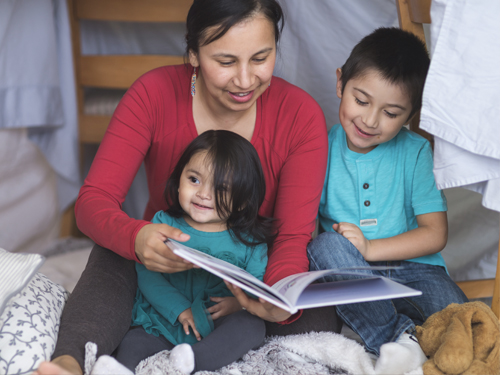
Canada’s Indigenous households live in some of the worst housing conditions in the country. Nearly 20% of Indigenous people live in housing that needs major repairs, and 20% live in housing that’s overcrowded. Improving Indigenous housing is therefore a priority of our National Housing Strategy (NHS).
Using data from the 2016 Census, we’ve conducted research on the housing conditions of off-reserve Aboriginal households.
Notes:
- We use the term “Aboriginal,” instead of “Indigenous,” in the next section, since that was the term used in the Census documents we studied.
- We’ll also refer to off-reserve Aboriginal households as simply “Aboriginal households.”
Conditions improved from 2011 to 2016, but problems persist
Here’s what our research revealed:
- From 2011 to 2016, the housing conditions of Aboriginal households improved at a faster pace than those of non-Aboriginal households.
- Despite this, in 2016, the incidence of core housing need (CHN) remained much higher for Aboriginal households (18%) than for non-Aboriginal households (12%).
- The proportion of Aboriginal households who were households in CHN fell from 2006 to 2016. However, the actual number of Aboriginal households in CHN grew by 36,690.
- Problems with affordability are still the main cause of CHN for both Aboriginal and non-Aboriginal households. But overcrowding and dwellings in need of major repair were also significant issues for Aboriginal households, and more so than for non-Aboriginal households.
- Aboriginal households are still more likely to be renter households than non-Aboriginal households. Also, Aboriginal renters had a higher incidence of CHN than did Aboriginal owners and non-Aboriginal renters.
- Aboriginal households had a lower homeownership rate. Additionally, Aboriginal homeowners had a larger share of households that held mortgages relative to non-Aboriginal households.
- Finally, we compared Aboriginal households by household type, age and identity. Despite improving housing conditions, lone-parent, youth-led and Inuit households still had the highest rates of CHN within their respective groups.
Meeting the needs of vulnerable Canadians
This research is an example of our efforts to meet the objectives of the NHS. By studying the housing conditions of off-reserve Indigenous Canadians, we reinforce the NHS’ commitment to prioritizing the housing needs of vulnerable Canadians. This research also ensures we’re taking steps to meeting the NHS goal of ensuring that the housing needs of Indigenous groups are identified and improved.






 Share via Email
Share via Email
